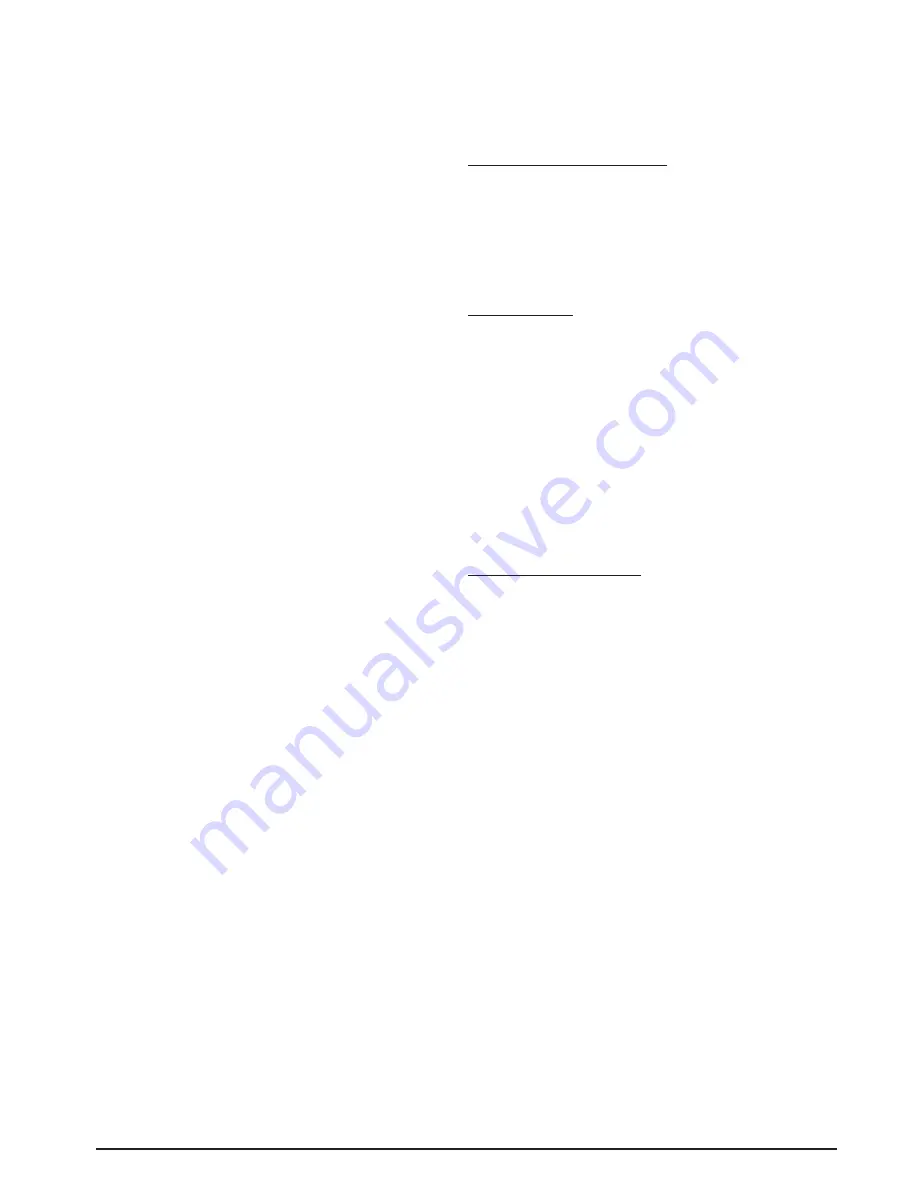
8
START UP & ADJUSTMENTS
Pre-Start Check List
√
Verify that the outdoor unit is installed according to all
instructions in this document.
√
Verify that the indoor unit is appropriate for use with the
refrigerant listed on the outdoor unit. And that it has the
proper design pressure for the outdoor unit equipment
type.
√
Verify the indoor unit and thermostat have been installed
in accordance with that equipment’s instructions.
√
Verify line voltage power leads are securely connected and
that both indoor and outdoor units are properly grounded.
√
Verify that the power supplied by branch circuits for both
the indoor and outdoor equipment is:
• the proper voltage for the equipment, and
• that the overcurrent protection device is properly
sized, and
• that the supply wiring is the correct gauge.
√
Verify that the low voltage and thermostat wiring are securely
connected to the proper terminals for all equipment.
√
Verify that the low voltage transformer has been properly
connected with that unit’s instructions.
√
Verify that the refrigerant line-set has been properly routed
between the units, connected appropriately, is properly
secured and protected from damage, and that it has the
correct piping insulation installed.
√
Verify that the refrigerant system and lines are leak free by
inspection with a leak detector or the soap-bubble method.
√
Verify that any attached indoor ducting has been properly
installed and sealed.
√
Verify that the indoor condensate drain line and trap are
properly installed and functioning.
√
Verify that all removable panels have been re-installed,
and all cabinet enclosures and fan guards are secure.
√
Verify that the air filters are clean and properly installed.
√
Verify that the thermostat is set to the stand-by, or off
setting. And the fan switch is set to automatic or off.
Start-Up Procedures
The thermostat's function mode should be set to OFF and
the fan mode should be set to AUTO. Close all electrical
disconnects to energize the system.
Air Circulation - Indoor Blower
1. Set the thermostat system mode on OFF and the fan mode
to ON.
2. Verify the blower runs continuously. Check the air delivery
at the supply registers and adjust register openings for
balanced air distribution. If insufficient air is detected,
examine ductwork for leaks or obstructions.
3. Set the thermostat fan mode to AUTO and verify the blower
stops running.
System Cooling
1. Set the thermostat’s system mode to COOL and the fan
mode to AUTO. Gradually lower the thermostat temperature
setpoint below room temperature and verify the outdoor
unit and indoor blower energize.
2. Verify blower wheel is spinning in direction indicated by
arrow. Feel the air being circulated by the indoor blower
and verify that it is cooler than ambient temperature. Listen
for any unusual noises. If unusual sounds occur, determine
the source of the noise and correct as necessary.
3. Verify HI and LO refrigerant pressures.
4. Allow the system to operate for several minutes and then
set the temperature selector above room temperature.
Verify the fan and compressor cycle off with the thermostat.
NOTE:
The blower should also stop unless fan mode is
set to the ON position.
System Heating (optional)
1. Set the thermostat's system mode to HEAT and the
temperature mode above room temperature.
2. Verify the optional heating equipment (furnace or electric
heat) and indoor blower energize. Feel the air being
circulated by the indoor blower and verify that it is warmer
than ambient temperature. Listen for any unusual noises.
If unusual sounds occur, determine the source of the noise
and correct as necessary.






























